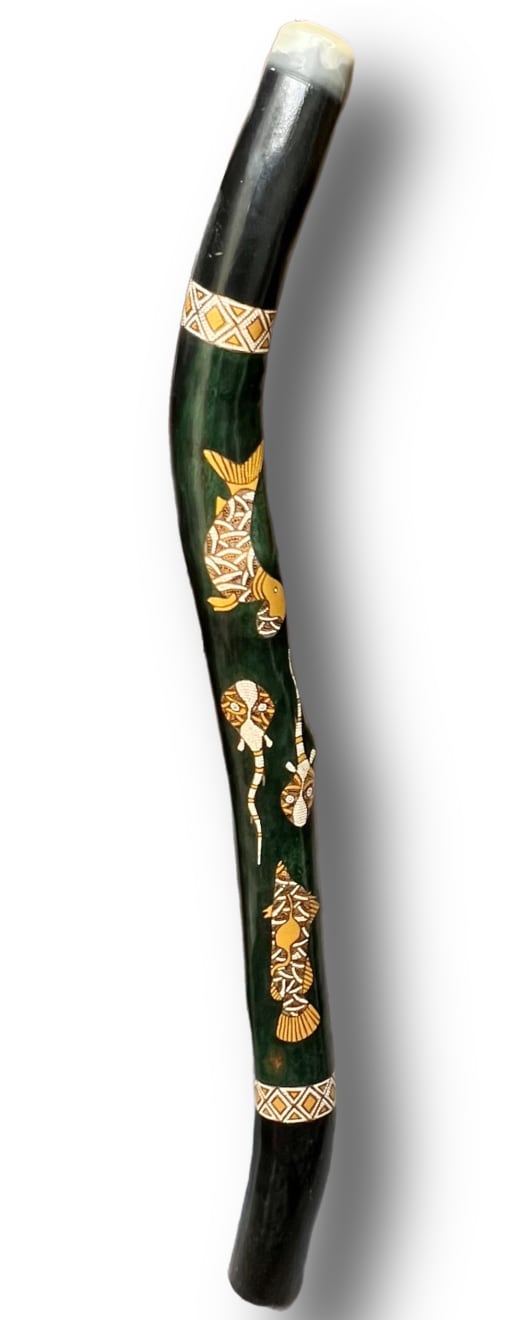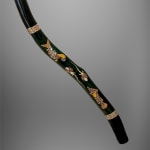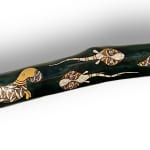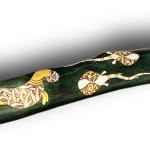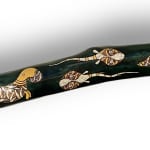-
Artworks
Anonymous
Didgeridoo, 2000WoodL 55” x Diameter 5”Further images
'Aboriginal Didgeridoo' presents a striking ceremonial wind instrument adorned with meticulous indigenous artwork depicting stylized fish and lizards against a deep forest green surface. The elegant curved form of this..."Aboriginal Didgeridoo" presents a striking ceremonial wind instrument adorned with meticulous indigenous artwork depicting stylized fish and lizards against a deep forest green surface. The elegant curved form of this traditional instrument showcases intricate beadwork in amber, white, and brown, with distinctive geometric bands encircling both ends. The careful craftsmanship reveals itself through the precise arrangement of tiny beads, creating a flowing narrative of aquatic life along the instrument's length, while the polished finish allows the natural characteristics of the wood to enhance its organic, earthy presence.
About Artwork: Aboriginal Didgeridoo
Created around 2000, this wooden didgeridoo measures an impressive 55 inches in length with a 5-inch diameter, exemplifying the traditional Australian Aboriginal wind instrument used for thousands of years. Originating from northern Australia, this piece carries deep cultural significance as an instrument traditionally crafted from eucalyptus hollowed by termites and used in ceremonial practices and storytelling. The beaded decorations featuring aquatic motifs connect the instrument to nature and Aboriginal cosmology, while the geometric patterns at each end reflect traditional design elements passed down through generations. When displayed, this didgeridoo commands attention not only as a visually striking art piece but also as a link to one of the world's oldest continuous musical traditions. The instrument's form follows function perfectly—its length and curve designed to produce the characteristic resonant drone achieved through the specialized circular breathing technique used by traditional players.
Futher Info about the Didgeridoo
The didgeridoo (/ˌdɪdʒəriˈduː/; also spelt didjeridu, among other variants) is a wind instrument, played with vibrating lips to produce a continuous drone while using a special breathing technique called circular breathing. The didgeridoo was developed by Aboriginal peoples of northern Australia at least 1,000 years ago, and is now in use around the world, though still most strongly associated with Indigenous Australian music. In the Yolŋu languages of the indigenous people of northeast Arnhem Land the name for the instrument is the yiḏaki, or more recently by some, mandapul. In the Bininj Kunwok language of West Arnhem Land it is known as mako.[1]
Provenance
Acquired in Sydney Australia

